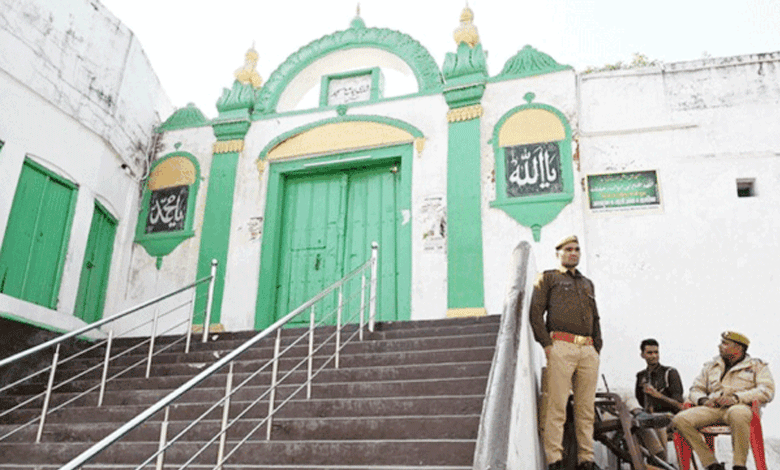Sambhal Jama Masjid Survey Report Submitted in Court in a Sealed Envelope
According to the report, when the plaster was removed from one of the columns, red-colored columns, typically used in Hindu temples, were revealed. The report suggests that there are several indications within the mosque that point to it having been an ancient Hindu temple.

Lucknow: The survey report of the Sambhal Jama Masjid has been presented in the Chandosi court. Court Commissioner Ramesh Singh Raghav stated that the report includes photographs and videos taken during the survey of the mosque, all enclosed in a sealed envelope. The commissioner confirmed that the survey report, which spans approximately 43 pages, contains 60 photographs and over 5 hours of video recordings made during the survey.
Also Read: Cabinet Sub-Committee Discusses Key Details of Congress Government’s Rythu Bharosa Scheme
What Was Revealed in the Jama Masjid Survey Report?
Court Commissioner Ramesh Singh Raghav explained that the survey was conducted in two shifts, during which more than five hours of video footage and over 60 photographs were captured. All of this was included in the report. He added that both parties’ perspectives were carefully considered during the survey. He further stated that the 43-page report had been presented to the court.
When asked by the court what he observed during the survey and what the report revealed, the court commissioner responded that, based on the Supreme Court’s guidelines on this matter, he would not make any comments. He mentioned that the report had been submitted in a sealed envelope and that both parties’ lawyers were present in court. Now, it is up to the court to make a decision on the matter.
Hindu Side’s Claim of a Har Har Temple
The Hindu side claims that there was a Har Har Temple at the site of the Sambhal Jama Masjid before its construction. They argue that during the Mughal era, the ancient Har Har Temple was demolished to build the mosque. The Hindu side has referenced several historical sources, including the Akbarnama and Baburnama, and also pointed to an ASI report from the British period in support of their claim.
On the other hand, the Muslim side denies the presence of any temple at the site, asserting that the mosque was constructed during the Mughal period. The Muslim side has completely rejected the Hindu side’s claims.
Following the court’s order, a survey was conducted by the court commissioner. The survey was done in two phases, with significant violence occurring in Sambhal during the second phase.
What Does the 1875 ASI Report Say About Sambhal Jama Masjid?
The 1875 ASI report on the Sambhal Jama Masjid contains several surprising details. The report, prepared by A.C.L. Carlyle, mentions the mosque’s inner and outer columns, which were identified as being part of ancient Hindu temples, efforts having been made to cover them with plaster.
According to the report, when the plaster was removed from one of the columns, red-colored columns, typically used in Hindu temples, were revealed. The report suggests that there are several indications within the mosque that point to it having been an ancient Hindu temple.
Mention of an Inscription
The 1875 ASI report also references an inscription found within the mosque, which is considered an important piece of evidence. The inscription states that the mosque was completed in the 933 Hijri by Mir Hindu Beg, a courtier of Babur, who is said to have transformed a Hindu temple into a mosque. Additionally, Babur’s memoir, the Baburnama, is mentioned, noting that Babur’s courtier Mir Hindu Beg converted the Hindu temple in Sambhal into the Jama Masjid under Babur’s orders.
